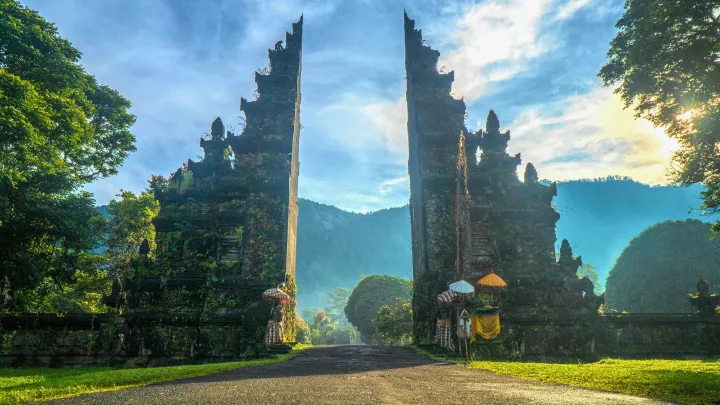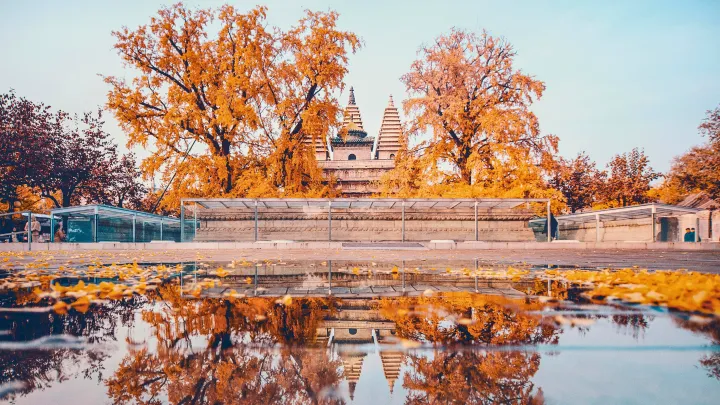The Peace Destinations
Nov 15 • 5 min read
Reykjavik is one of those places that immediately draws you in with its fresh air, colourful streets and quiet sense of creativity. It’s the heart of Iceland travel and the natural base for exploring the country’s landscapes, yet the city itself offers enough character to justify a dedicated Reykjavik itinerary. Whether you’re visiting for a long weekend or planning to circle the Ring Road Iceland, the capital gives travellers a gentle introduction to the island’s culture, food and daily rhythm.
This Reykjavik guide explores the most rewarding experiences for first-time visitors, from iconic landmarks to neighbourhood walks, viewpoints and atmospheric cafés. It’s written to help you understand what makes Reykjavik feel so special and highlight the places that genuinely add value to your time in the city.
Best Time to Visit Reykjavik
Reykjavik offers something different depending on the season, so the ideal time to visit depends on what you want to experience.
Reykjavik winter travel (November to March) is about crisp mornings, long nights and the chance to experience real Icelandic snow. The city feels calmer, and the soft winter light offers beautiful Reykjavik photography spots, especially around the coastline. This is also Northern Lights season, though sightings can never be guaranteed.
Reykjavik summer travel (June to August) brings long daylight hours, lively streets and outdoor cafés. The weather is mild, and it’s the best time for Reykjavik nature views, harbour walks, and taking day trips that rely on longer daylight. Many visitors start their Iceland summer trip here before setting off for the countryside.
Read more:
Top Attractions & Things to Do in Reykjavik
Hallgrímskirkja
Hallgrímskirkja is the city’s most recognisable landmark and a centrepiece of Reykjavik sightseeing. The church’s design, inspired by Icelandic basalt columns, creates a striking presence in the Reykjavik city centre. Inside, the tower lift brings you to one of the best Reykjavik viewpoints, with views stretching across the coloured houses, Mt Esja and the Faxaflói Bay coastline. It’s a perfect starting point for Reykjavik first timers.
Reykjavik Old Harbour
The Old Harbour is one of the most atmospheric areas in the city, where old fishermen’s sheds now house cosy Reykjavik cafés, local restaurants and creative spaces. It’s a gentle area for a Reykjavik city walk, especially in the morning when the boats are heading out. The surrounding pathways offer open views towards Mt Esja, and the harbour itself is a good spot for photography, especially on clear days.
Reykjavik Street Art
Reykjavik’s street art scene surprises many first-time visitors. Murals brighten narrow streets and quiet corners, adding colour to the already playful Reykjavik coloured houses. Exploring these artworks is one of the most enjoyable free things to do in Reykjavik. You’ll find pieces around Laugavegur, Hverfisgata and hidden alleys branching off the main shopping streets.
Street art adds depth to the Reykjavik culture scene and shows just how expressive the city can be.
Reykjavik Museums
Although Reykjavik looks small, it has a rich collection of museums that give insight into Iceland’s history and creative identity. The National Museum of Iceland offers a clear, accessible introduction to the island’s past. The Reykjavik Art Museum showcases contemporary art across multiple buildings, and the Settlement Exhibition brings you inside an excavated Viking-age home.
These museums are useful stops during an Iceland winter trip when outdoor sightseeing slows down.
Reykjavik City Centre Walk
A Reykjavik city walk is one of the simplest and most enjoyable ways to experience the capital. The centre is compact, calm and designed for slow exploration. You can wander past independent bookshops, minimalist clothing stores and inviting cafés without feeling rushed.
Side streets reveal colourful wooden houses, each painted differently, which have become some of the best places in Reykjavik for everyday photography. It’s this gentle charm that makes Reykjavik a memorable stop even for travellers continuing on to the countryside.
Icelandic Architecture & Reykjavik Landmarks
Reykjavik blends modern Nordic lines with older timber buildings, creating a unique architectural mix. Beyond Hallgrímskirkja, landmarks such as Harpa Concert Hall stand out for their geometric glass structure that glows differently depending on the weather.
The Sun Voyager sculpture, set along the waterfront, is a popular Reykjavik photography spot, especially during sunrise or snow-covered mornings. Together, these pieces reflect the city’s forward-facing design and connection to nature.
Views of Mt Esja
Mt Esja forms the dramatic backdrop to the city and is visible from several waterfront paths. Even if you aren’t planning to hike it, the mountain adds a constant sense of scale to Reykjavik nature views. On clear days, the snowy ridges provide beautiful contrast to the colourful neighbourhoods.
Several viewpoints along Sæbraut capture this landscape well, especially during Reykjavik winter travel when the mountain turns a brighter white.
Reykjavik Safe City Experience
Reykjavik solo travel is extremely popular thanks to the city’s calm, friendly environment. Street crime is rare, and locals often walk alone even late in the evening. This sense of everyday safety makes it easier to explore at your own pace, whether you’re visiting museums, strolling the harbour or taking photographs at sunrise.
Where to Stay in Reykjavik
Accommodation in Reykjavik ranges from modern hotels to small guesthouses, especially around the city centre.
Luxury travellers often choose hotels near the Harpa Concert Hall or along the waterfront for peaceful views and easy access to key attractions.
Mid-range options in the Reykjavik city centre offer comfortable rooms, on-site dining and walking access to shops, cafés and landmarks.
Budget travellers will find guesthouses around quieter side streets, many of which offer breakfast and shared kitchens. These are popular with those starting their Ring Road Iceland journey and looking for a simple base.
Practical Tips for Visiting Reykjavik
- Reykjavik weather can change quickly, so always carry a waterproof layer, even in summer. Comfortable walking shoes are essential because much of the sightseeing is done on foot.
- Getting from Keflavik airport to Reykjavik is straightforward, with shuttle buses running regularly and taking around 45 minutes. Taxis are available but far more expensive.
- If you plan to explore beyond the city, book car hire early, especially during Iceland summer trip season when demand rises.
- Food and drink tend to be on the higher end price-wise, so stopping by bakeries or cafés is a common way to enjoy the city affordably.
FAQs
Q1. Is Reykjavik safe for solo travellers?
Yes, Reykjavik is considered a very safe city, making it ideal for Reykjavik solo travel.
Q2. How many days do you need in Reykjavik?
Most travellers spend one to three days in the city before exploring more of Iceland.
Q3. What are the best free things to do in Reykjavik?
Harbour walks, street art, viewpoints, the waterfront path and exploring the coloured houses.
Q4. Is it easy to get from Keflavik airport to Reykjavik?
Yes, regular shuttle buses connect the airport to the city centre in under an hour.
Q5. What is the best season to visit Reykjavik?
Summer offers long daylight hours and lively streets, while winter brings atmospheric snow and Northern Lights potential.
Q6. Are museums in Reykjavik worth visiting?
Yes, the city’s museums provide an excellent introduction to Iceland’s culture and history.
Conclusion
Reykjavik may be small, but it’s full of character, creativity and calm moments that help you settle into Iceland’s rhythm. From its harbour paths and colourful houses to its viewpoints and museums, the city has a gentle charm that stays with you long after you leave.
If you’re planning further exploration of Iceland, you can find more destinations and hidden gems on The Peace Destinations website to help shape your journey.




